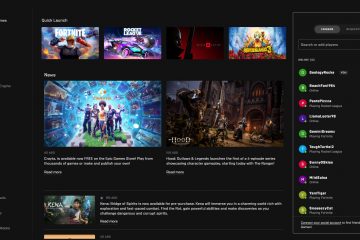在版權上的人工智能工具的快速發展領域中,Suno概述了其下一個迭代v4.5。
該公司將此更新定位為“最新和最富有表現力的模型”,旨在將音樂創意轉化為成品軌道。 Suno建議更新的重點是提供更具活力的音樂,以更準確的精度處理流派描述,並以更加情感的深度和範圍來製作人聲。
公司構成了其使命,說“做自己的音樂是為了將靈感轉變為現實-將您的思想轉變為生活。 src=“ https://winbuzzer.com/wp-content/uploads/2025/05/auno-auno-ai-muic-creator.jpg”>
精製提示和功能升級
suno v4.5也可以捕獲更多的微妙的音樂元素,包括“自然色調變化”和“儀器”和“樂器”和“儀器”。據報導,它處理了類型的混搭,例如將中西部情緒與Neosoul相結合,比以前的版本更有效。為了幫助用戶,一個新的“及時增強助手”功能旨在將簡單的流派創意擴展到適合AI的更詳細的樣式說明中。
超越了核心生成,現有的Suno功能將獲得升級。 “Covers,”a tool that reimagines user-uploaded audio based on a new prompt, and “Personas,”which captures the sonic character (vocals, style, vibe) of one track to apply to another, now utilize the v4.5 engine.
Suno suggests the updated Covers feature should retain more melodic detail from the source audio and perform better when switching genres.此外,用戶現在可以結合封面和角色功能。
引用的技術改進包括更快的生成速度,能夠產生長達八分鐘長的連貫歌曲的能力以及增強的整體音頻質量,具有更平衡的混音和更少的聲音文物,例如降解或脫澤或光滑效果。用戶可以通過Suno的創建接口嘗試新型號。
導航法律和道德電流
suno的技術進步,因為公司的技術進步就會出現嚴重的競爭。 Since June 2024, Suno and competitor Udio have faced lawsuits filed by major record labels, coordinated by the RIAA, alleging mass copyright infringement.
The core accusation is that Suno trained its AI on vast libraries of copyrighted music without securing licenses, constituting what RIAA Chief Legal Officer Ken Doroshow termed “unlicensed copying of sound recordings on a massive規模。”
雖然Suno和Udio在2024年8月的法院回答中援引了“合理使用”學說,但RIAA卻強烈反擊。該行業集團後來稱這些公司承認可能在培訓中使用受版權的錄音a Suno首席執行官Mikey Shulman公開,稱該技術為“變革性”,並指出它“旨在產生全新的輸出,而不是記住和反思現有內容,同時指責訴諸於“老律師領導的劇本”的標籤。”
這場法律鬥爭反映了對AI培訓數據和知識產權的更廣泛的行業關注,並擴展到語音克隆等領域。立法提案,例如沒有偽造的行為,在4月2025年左右的apections afteriped a> afteriped a> afore a> aforder affore a> afore after after after affore after after in traperied after after in traperied after traperied
從音樂行業團體和科技公司中。
在2024年9月對邁克爾·史密斯(Michael Smith)的聯邦起訴書中迅速說明了濫用音樂的可能性一個競爭環境。 Google expanded access to its Music AI Sandbox featuring the Lyria 2 model in April, offering tools for professional creators and utilizing its SynthID watermarking technology—an imperceptible digital signal embedded in audio to trace its origin.
Stability AI released Stable Audio 2.0 in April 2024 and NVIDIA announced its sophisticated Fugatto audio model in November 2024 but has refrained from public release, citing道德的擔憂。 NVIDIA的Bryan Catanzaro告訴路透社:“任何生成技術總是會帶來一些風險,因為人們可能會使用它來產生我們不希望沒有的東西。”
音樂流媒體平台也在定義其位置。 Spotify CEO Daniel Ek stated in September 2023 that the platform would allow AI-generated music but police unauthorized artist impersonation, acknowledging a “contentious middle ground.”
That same month, Universal Music Group and Deezer announced an “artist-centric”streaming model designed to prioritize human artists in royalty calculations, partly in response to concerns about AI-generated content flooding platforms.雖然有些創作者擁抱了這些工具,但其他人則在對Google的Lyria的早期測試中所分享的情感呼應:“音樂總是需要人類的觸感。”

